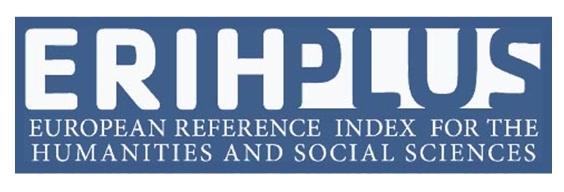Current issue

Volume 18, Issue 1, 2026
Online ISSN: 2406-1379
ISSN: 1821-3480
Volume 18 , Issue 1, (2026)
Published: 17.12.2025.
Open Access
Online First is a feature that enables the publication of final revised articles online before their inclusion in a printed issue. This accelerates the dissemination of research findings and ensures that your authors' work reaches the audience promptly.
Articles published through Online First are assigned a DOI upon their online posting. They should be cited as follows:
Author(s). Title of the article. Exercise and Quality of Life. Advance online publication. DOI:10.31382/xxxx
After assignment to a final issue, citations can include the volume and page numbers in addition to the DOI.
Once articles are allocated to a specific issue, their hosting transitions from the Online First page to the main journal archive. The DOI ensures persistent accessibility.
Citations to Online First articles are counted toward the journal's Impact Factor if other indexing criteria are met. This promotes earlier engagement with the published work.
Online First articles are considered final but not definitive until assigned to a specific issue. Errors identified in the online version can be corrected before the final issue publication.
All issues
Contents
22.01.2025.
Original scientific paper
Comparison of the effects of isoinertial and traditional strength training in male tennis players
The goal of the research was to determine the effects of six weeks of isoinertial training on explosive strength, speed, and agility compared to traditional strength training in tennis players. The subjects, thirty male tennis players aged 20 to 35, were divided into three groups: the experimental group 1 (E1; n=10), which performed strength training on an isoinertial device; the experimental group 2 (E2; n=10), which performed traditional strength training; and the control group (C1; n=10). E1 and E2 groups had a total of six weeks of training with two training sessions per week, with three exercises per training session performed in four series for six to eight repetitions. The results showed that isoinertial strength training has a positive effect in the variables squat jump (SJ), countermovement jump (CMJ), 5-meter sprint (5M), 20-meter sprint (20M), agility T-test (T-test), and 505 agility test (505). Post hoc analysis revealed that there are significantly better effects of isoinertial training compared to isodynamic training in the countermovement jump (CMJ), 5-meter sprint (5M), and 20-meter sprint (20M). The E1 group had significantly better results than the C1 group in all tests. The E2 group had significantly better results compared to the C1 group in the variables SJ, 20M, and T-test. The results also show that six weeks of isoinertial training produce better results in the development of variables CMJ and 20M compared to the traditional strength training group. Accordingly, fitness and tennis coaches should also use this training method when working with tennis players.
Dušan Ćorilić, Boris Karasek, Mladen Mikić
15.12.2024.
Original scientific paper
Game-related statistics that discriminate between winning and losing u-17 men's and women's basketball teams
The purpose of the present study was to compare game-related statistics between men's and women's under-17 (U-17) basketball teams and to identify game-related statistics that discriminate between winning and losing teams for both sexes. Games with a final score difference greater than 30 points were excluded from the analysis, so the final sample consisted of 196 games (109 men's and 87 women's games) from the 2022/2023 season of the Triglav Cadet League of Serbia. The following game-related statistics were gathered from the official box scores of the Basketball Federation of Serbia: 2- and 3-point field-goals (successful and unsuccessful), free throws (successful and unsuccessful), defensive and offensive rebounds, assists, steals, turnovers, blocks (committed and received), and fouls (committed and received). Men's teams had significantly better values than women's teams in successful and unsuccessful 2-point field-goals, successful 3-point field-goals, successful and unsuccessful free throws, assists, and turnovers. Women's teams had statistically better values than men's teams in unsuccessful 3-point field-goals, offensive rebounds, steals, and committed fouls. The discriminant factors between winning and losing teams in close games, were successful 2-point field-goals, defensive rebounds and assists for both sexes, and offensive rebounds for men's teams. In balanced games, discriminant factors were assists for both sexes and successful 2-point field-goals for women's teams. In unbalanced games, discriminant factors were assists for both sexes, defensive rebounds for men's teams, and successful 2-point field-goals for women's teams. These findings suggest that there are notable differences in game-related statistics for U-17 men's and women's basketball teams.
Boris Karasek, Mladen Mikić
16.12.2020.
Original scientific paper
Towards recognition of peer violence in youth sports – the case of Vojvodina
The paper contains the results of the field research that the authors used in order to determine the existence and manifesting forms of peer pressure in youth sports. The sample consists of young people aged 11 to 18, who practice sport (N=536). The research was conducted in the second half of 2019 in the territory of the Autonomous Province of Vojvodina. The research results indicate that there are various forms of aggressive and violent behavior among youth, among which psychological violence predominates. The most common place for violence is the dressing room, after training or a competition. In terms of age, high-school-age children report higher level of violence victimization compared to older primary school children. The research results Introduction DOI: 10.31382/eqol.200603 The aggression and violence are global social phenomena, which have been researched in the past three decades. By examining many definitions of aggression it can be concluded that it is any “behavior that is intended to harm another person who is motivated to avoid that harm” (Allen & Anderson, 2017: 2; Bushman & Huesmann, 2010; DeWall, Anderson, & Bushman, 2011); whereas violence is, among other things, described as an “extreme form of aggression that has severe physical harm (e.g.,serious injury or death) as its goal” (Allen & Anderson, 2017: 3; Anderson & Bushman, 2002; Bushman & Huesmann, 2010; Huesmann & Taylor, 2006). testify to the fact that sport shares “the fate” of the society in which it exists and that policy makers in youth sports should take into consideration this social phenomenon as well.
Ivana Milovanović, Radenko Matić, Jovan Vuković, Milica Blagojević, Mladen Mikić, Dragan Marinković























